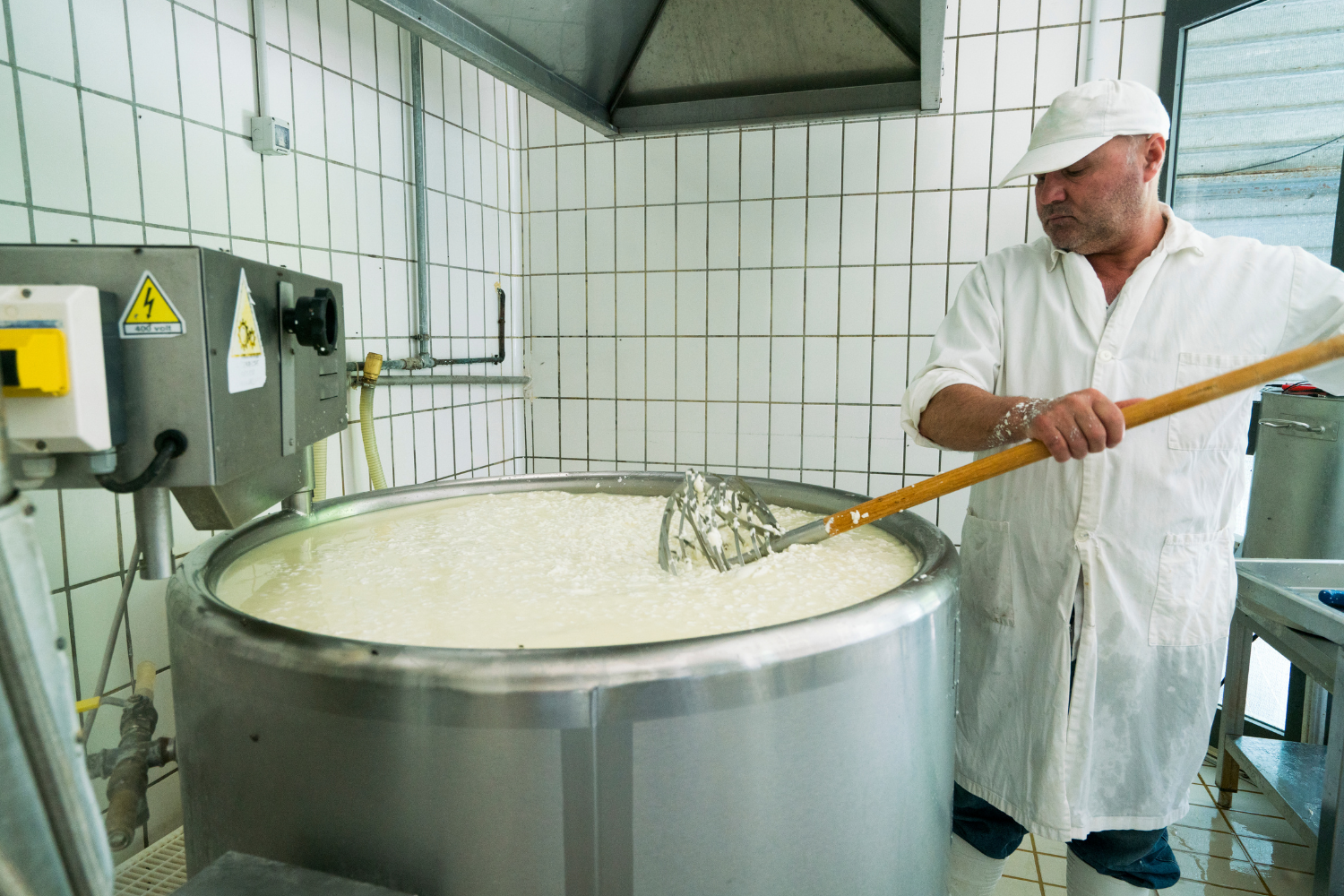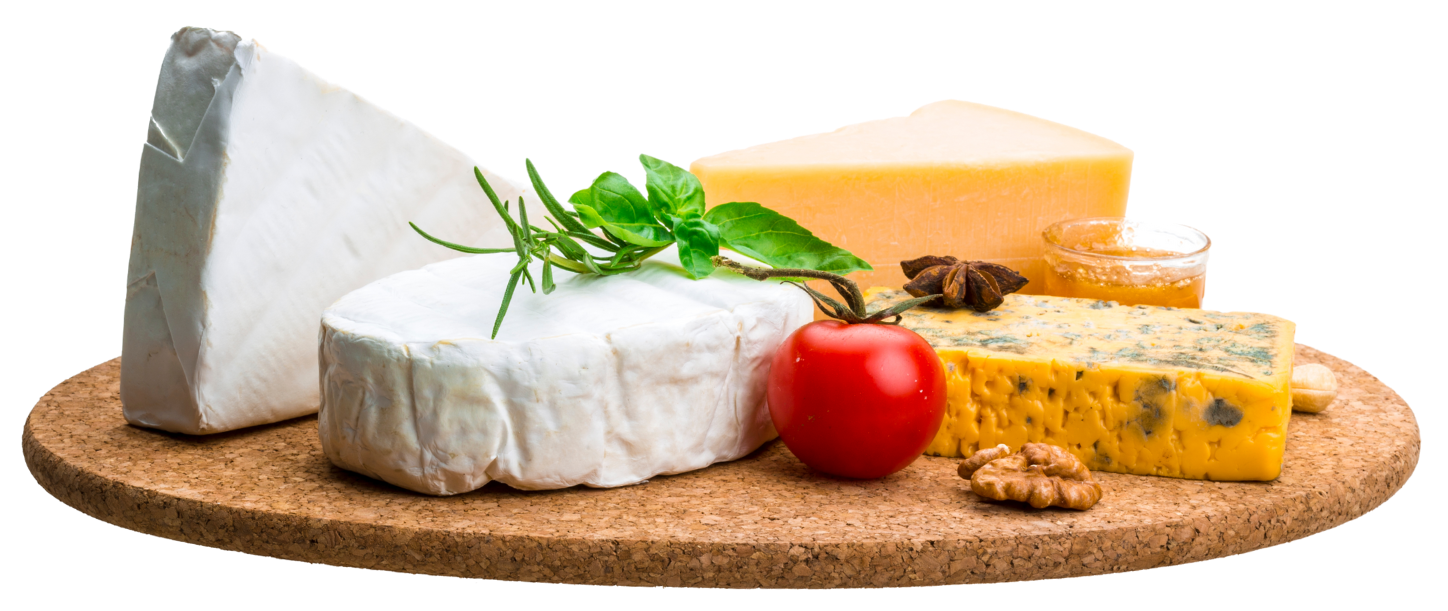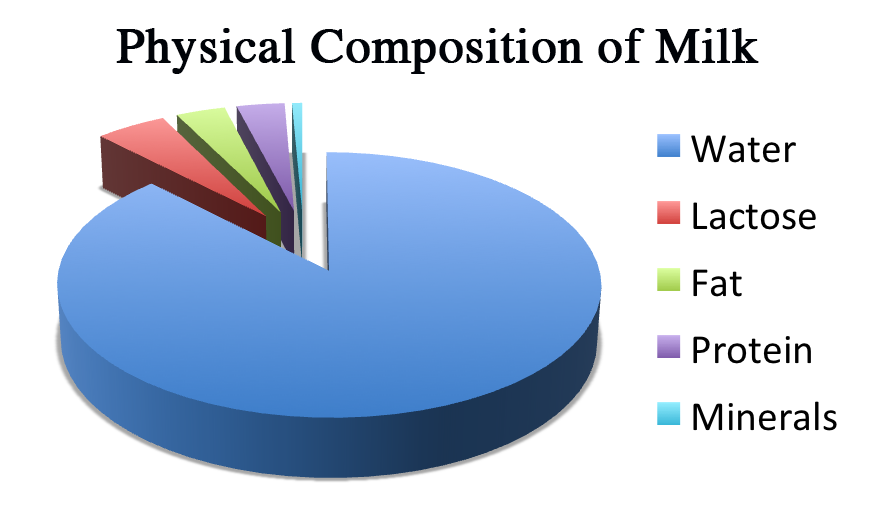Agricultural Literacy Curriculum Matrix
Lesson Plan
Cheesemaking: A Science, an Art, and a Craft
Grade Level
Purpose
Students make fresh mozzarella cheese and explore a career as an artisan cheesemaker as they discover the science, art, and craft involved in the development of specialty cheeses. Grades 6-8
Estimated Time
Materials Needed
Engage:
- Three (or more) samples of cheese for the entire class. Select at least one cheese variety from the following categories:
- Soft Cheese: Brie, Burrata, Camembert, Feta, Gorgonzola, Halloumi, Mascarpone, or Muenster
- Mild Flavor: Cheddar, Colby, Gouda, Monterey
- Aged: Parmesan, Swiss Provolone, or Sharp Cheddar
- Paper plates, napkins, and toothpicks for taste-testing
Activity 1:
- Cheesemaking: Science, Art, Craft worksheet, 1 copy per student
- Cheesemaking: Science, Art, Craft, Teacher Key
- Physical Composition of Milk graphic
- Mozzarella Cheese recipe, 1 copy for teacher
- Ingredients:
- 1 gallon of whole milk (2% also works)
- 1/2 cup water (split)
- 1 ½ tsp citric acid*
- Rennet*
- Be sure to purchase rennet from a cheesemaking supplier or agclassroomstore.com. The rennet commonly available at a grocery store is primarily for desserts and is not adequate to form a true curd for mozzarella cheese.
- 1-3 tsp salt
- Kitchen supplies:
- Large pot with lid
- Colander
- Microwave safe bowl
- Long knife to cut curds
- Slotted spoon
- 2 small bowls
- Thermometer
- Measuring cups and spoons
- Stove or hot plate
- Microwave
- A Brief History of Cheese video
- Crackers
- Toothpicks, napkins, and paper plates for taste-testing
*These supplies can be purchased in the Mozzarella Cheese kit from agclassroomstore.com.
Activity 2:
- Artisan Cheesemaker video
- Cheesemaking: Science, Art, Craft worksheet (continued from Activity 1)
Vocabulary
casein: a protein that makes up about 80% of milk
cheese: a food made from pressed curds of milk
coagulate: to change to a solid or semi-solid state
culture: beneficial bacteria in the cheese making process that changes lactose into lactic acid, helps coagulate (set) milk, and helps the whey to drain
curd: clumps of casein (coagulated protein) that separates from the liquid when milk coagulates
lactose: a disaccharide sugar present in milk which contains glucose and galactose units
rennet: a complex set of enzymes produced in the stomach of young ruminant animals
whey: liquid that drains from the curd of clotted milk; contains lactose, proteins, water-soluble vitamins, and some minerals
Did You Know?
- It takes approximately 10 pounds of milk to make 1 pound of cheese.1
- The holes found in Swiss cheese are known as "eyes" to a cheese maker.2
- Cheddar cheese is not naturally yellow. All cheese is white, like the milk it is made from. Yellow cheeses have had a coloring added to them.1
- Mozzarella was once only made with milk from a water buffalo. Today mozzarella is most often made from milk produced by cows.3
Background Agricultural Connections
The United States ranks second in the world for cheese production and produced about 6 million metric tons of cheese in 2020.9 In 2021 it was estimated that over 55,000 people were employed in the cheese production industry in the United States. Cheesemaking is a science, an art, and a craft. Science is the tool to transform milk into cheese. Art accounts for the creative skills used in the development of new cheese flavors and varieties. Crafts represent activities requiring skill. Cheesemaking requires many skills.
Origin of cheese
Cheese is one of many products made from milk. The exact date of origin for cheese is unknown, but it has been found in Egyptian tombs and murals from 4,000 years ago. It is thought that cheese was discovered by accident when it was common to store milk in a container made from an animal stomach. The enzyme, rennet is found in ruminant stomachs. When added to milk it causes milk to coagulate and separate curds (solid proteins) from whey (liquid). This means when someone would store milk in a ruminant stomach (a common practice before glass and plastic), their milk would turn to fresh cheese.
Today, the art of making cheese has become much more technical.4 Now there are hundreds of cheese varieties which can be grouped into eight categories including blue, hard, pasta filata, processed, semi-hard, semi-soft, soft and fresh, and soft-ripened.5 Currently more than one-third of all milk produced each year in the United States is made into cheese.6
Cheesemaking Process
The cheesemaking process uses science and chemistry to remove whey and liquid from milk to form a curd (cheese).7 Along with a vast array of cheese types, there is also a variety of cheese-making processes. Each process shares the same basic components:
- Milk: All cheese is made from milk. In the United States, milk from cows is most common. However, many specialty cheeses are made from the milk of sheep, goats, and other mammals. Milk is composed of varying amounts of carbohydrates (lactose), fat, protein (casein and whey), vitamins, and minerals.
- Acid: Soft cheeses are made by adding a type of acid to milk to make it coagulate. Citric acid and vinegar are two examples of acids used in the cheesemaking process.
- Bacterial Cultures: Chemical changes in milk can be triggered using bacterial cultures. The use of beneficial bacteria creates chemical responses in the cheese to enhance specific flavors.
- Enzymes: The most common enzyme used to make cheese is Rennet. Rennet causes the milk to coagulate and is used to make hard cheeses.8 It helps the milk mixture separate the forming curds from the whey. Rennet splits off the hydrophilic portion of the casein micelles so it will no longer stay suspended in the aqueous solution of milk. Instead, the casein aggregates together to form the curds, while the whey (or liquid portion) separates.7
- Time: Some cheeses can be made in a short amount of time and others require aging to develop the proper flavor, texture, and moisture levels.
- Heat: Precise temperatures allow the enzymes and bacterial cultures to work properly in the cheesemaking process by allowing the beneficial bacteria to do its work.8
- Salt: Salting helps draw out additional moisture in the cheesemaking process. It also plays a huge role in the flavor of cheese.
Careers in the Cheese Industry
There are a variety of career opportunities that help keep cheese coming to our local grocery store. Artisan cheesemakers often work in shops to perform each step along the entire milk-to-cheese process. Some specialty shops may even raise their own dairy animals (cattle, sheep, or goats) for the milk that makes their cheese. There are also careers working in large cheese processing facilities used to stock grocery stores and food services across the country. These careers require a variety of training and education in the subjects of microbiology, chemistry, food science, or process engineering. Specific tasks include research and development, quality control, technical services, customer service, and sales. 
Engage
- Before class, prepare bite-size samples of cheese. If possible, select one type of cheese from each of the following three categories:
- Soft Cheese: Brie, Burrata, Camembert, Feta, Gorgonzola, Halloumi, Mascarpone, or Muenster.
- Mild Flavor: Cheddar, Colby, Gouda, Monterey.
- Aged: Parmesan, Swiss, Provolone, or Sharp Cheddar.
- Give each student one small paper plate or bowl and a toothpick. Provide an opportunity for students to wash their hands and follow proper sanitation procedures for taste-testing.
- Invite students to get one sample of each cheese variety and return to their desks.
- Have students observe the cheese samples closely. Ask a variety of questions to help students identify similarities and differences about the appearance of each cheese sample. Examples include:
- What colors of cheese are there?
- How does each sample look similar or different?
- How does each sample smell?
- After confirming that your students don't have any milk allergies, invite them to taste each cheese one at a time and describe the flavor, texture, and feel of each cheese. See if students can identify each variety of cheese in the taste test. Discuss as a class or in small groups.
- Following the taste test, write the words science, art, and craft on the board. Explain that we'll be exploring a career that involves science, art, and craft.

Explore and Explain
Activity 1: The Science of Cheesemaking
Preparation: Prior to class, gather the ingredients and kitchen supplies outlined in the Mozzarella Cheese recipe. If possible, make the recipe once before class for practice. The Making Mozzarella Cheese in the Classroom video can also help illustrate the steps. Set up the hot plate in front of the class or in an area where students can best watch the cheesemaking process.
- Give each student one copy of the Cheesemaking: Science, Art, Craft worksheet.
- Display the Physical Composition of Milk graphic. Explain that milk is composed of five things—water, lactose, fat, protein, and minerals. Hold up your gallon of milk and ask students how they can remove the water from the milk. Allow students to offer their ideas.

- Explain that you'll need to use science. Cheese is made by removing a large percentage of water from milk using science and chemistry.
- Begin the cheesemaking process by following the step-by-step instructions from the Mozzarella Cheese Recipe. Project the recipe on the board to help students follow along. As you demonstrate the cheesemaking process, students should be answering the questions on page 1 of their Cheesemaking: Science, Art, Craft worksheet.
- During step 6 of the cheesemaking process there will be a 10 minute wait while the milk coagulates. Watch A Brief History of Cheese.
- After the video clip, discuss the following questions:
- How did milk and the discovery of cheese give Neolithic people a survival advantage? (Milk was rich with nutrients and cheese provided an opportunity to store food that would otherwise spoil.)
- Where is rennet produced? (in the stomach of some animals)
- The video clip and discussion should complete in time to return to step 7 of the cheesemaking process.
- When the cheese is complete, cut it into bite-size pieces and allow students to taste. Provide crackers or another complimentary food to pair with the cheese. Students should find the flavor and texture of the homemade cheese familiar, though it may not be exactly what they are accustomed to with store-bought cheese.
- Refer to the Teacher Key to help students complete page one of their Cheesemaking: Science, Art, Craft worksheet.
- Optional: If you'd like to expand the science discussion, consider the following:
- Display the Rennet/Chymosin graphic and discuss how biotechnology was used to create the enzyme, chymosin. Help students understand that science made it possible to produce the cheesemaking enzyme on a large scale to meet consumer demand for cheese. (Chymosin is used almost exclusively in commercial cheesemaking.)
- Use the Science You Can Eat lesson to make cottage cheese using both natural rennet and chymosin.

Activity 2: The Art and Craft of a Career in Cheesemaking
- Have students turn to page 2 of their Cheesemaking: Science, Art, Craft worksheet. Discuss the definitions of the words art (the expression or application of human creative skill and imagination) and craft (an activity involving skill in making things by hand).
- Instruct students to keep these two words (art and craft) in mind as they watch Beehive's Origin Story introducing them to a small scale artisan cheese plant. Students should take notes and answer the questions on the worksheet as they watch the video clip.
- Following the video, discuss how cheesemaking is an art and a craft (in addition to a science).
- Ask students to share the notes they kept on their worksheet. If time permits, allow them to explore specialty varieties of cheese similar to the hand rubbed cheeses described in the video.
Explore CareersThis lesson introduces students to career opportunities in the cheesemaking industry. It can also serve as a springboard to exploring related careers in food science, food product development, or food technology. |
Elaborate
-
Watch, What Cheese Looks Like Around the World to explore the legends and myths behind the invention of cheese and see what cheese looks like in different parts of the world.
-
Share the TED-Ed video The Beneficial Bacteria That Make Delicious Food.
-
Visit the Interactive Map for cheese production and discover how much cheese your state produces. Explore which states produce the most cheese. and explore why. Compare the maps showing both milk and cheese production.
-
In the role of a food product development specialist, divide students into groups and have them develop an idea for a new cheese product.
Evaluate
After conducting these activities, review and summarize the following key concepts:
- Careers in food production and processing are essential for a healthy and diverse food supply.
- The art of cheesemaking uses science to transform milk into many varieties of cheese.
- A career in the cheese production industry requires creativity and skill.
Sources
- https://www.popcornforthepeople.com/blogs/blog/11-fun-facts-about-cheese
- https://www.huffpost.com/entry/holes-in-swiss-cheese_n_1428707
- https://www.thespruceeats.com/what-is-mozzarella-cheese-1807036
- https://nationalhistoriccheesemakingcenter.org/history-of-cheese/
- https://www.usdairy.com/news-articles/cheese-types-what-you-need-to-know-about-cheese
- https://www.idfa.org/history-of-cheese
- Foods Experimental Perspectives. 7th edition. Margaret McWilliams
- Say Cheese! A Kid's Guide to Cheese Making. Ricki Carroll and Sarah Carroll
- https://www.statista.com/topics/1583/cheese-market/
- https://www.ibisworld.com/industry-statistics/employment/cheese-production-united-states/
Recommended Companion Resources
Author
Organization
| We welcome your feedback! If you have a question about this lesson or would like to report a broken link, please send us an email at matrixelearning@gmail.com. If you have used this lesson and are willing to share your experience, we will provide you with a coupon code for 10% off your next purchase at AgClassroomStore. |
